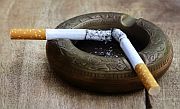
WEDNESDAY, June 24, 2015 (HealthDay News) — Smoking around your toddler may be just as harmful to your child as smoking during pregnancy, new research suggests.
By age 10, children exposed to secondhand smoke as toddlers tended to have wider waists and a higher body mass index (a calculation of body fat) than their non-exposed peers, Canadian researchers found.
“We suspect the statistics we’ve established linking childhood obesity to exposure to parents’ smoking may underestimate the effect due to parents under-reporting the amount they smoked, out of shame,” said study leader Linda Pagani, from CHU Sainte-Justine Research Centre in Montreal.
“By the age of 10, the children who had been intermittently or continuously exposed to smoke were likely to have waists that were up to three-fifths of an inch wider than their peers,” she said in a university news release. “And their BMI scores were likely to be between 0.48 and 0.81 points higher. This prospective association is almost as large as the influence of smoking while pregnant.”
While the weight gain might not seem large, the researchers explained that it occurs at a time in development that could have long-term consequences.
“Early childhood exposure to secondhand smoke could be influencing endocrine [hormone] imbalances and altering neurodevelopmental functioning at this critical period in . . . development, thus damaging vital systems which undergo important postnatal growth and development until middle childhood,” Pagani said.
She said there are multiple ways that household smoke negatively influences immune, neurodevelopmental and cardiovascular processes. And children’s immature vital systems are more vulnerable than adults to the toxic effects of secondhand smoke, Pagani pointed out.
The study doesn’t establish a direct cause-and-effect relationship between secondhand smoke exposure and later weight gain. But the researchers believe their work is stronger than previous studies because it included information about the children’s well-being, lifestyle, behavior and social environment that also could affect weight.
The study was published online recently in the journal Nicotine and Tobacco Research.
Around the world, 40 percent of children are exposed to secondhand smoke at home, the researchers said.
The study authors concluded that public health programs should educate parents on the importance of eliminating young children’s exposure to secondhand smoke.
More information
The American Academy of Pediatrics has more about the effects of secondhand smoke on children.
Copyright © 2025 HealthDay. All rights reserved.

